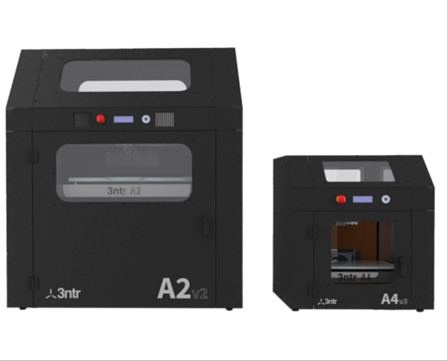
For quite some time, the only manufacturer of industrial thermoplastic extrusion, or fused deposition modeling (FDM), 3D printers was Stratasys, a leader in the 3D printing space that only became more powerful after merging with Israel’s Objet in 2012.
However, after the desktop additive manufacturing explosion that occurred with the rise of the open-source 3D printing movement, numerous smaller companies have sought to bring their own take on plastic extrusion, or fused filament fabrication (FFF), to the table and at costs that greatly undercut the FDM king. Not all of these firms have aimed for the industrial quality of Stratasys’ process and materials. Among the few that have is 3ntr, a firm from Northern Italy that has produced two FFF systems with some impressive industrial-grade features.
3ntr currently manufactures two industrial systems, the immense A2v2 (600x400x500 mm/24.4 x 13.7 x 19.2 in build volume) and the smaller A4v3 (305x205x210 mm/11.8 x 7.9 x 7.5 in). Though the powder-coated steel casing suggests the stability necessary for reliable printing, one of the key components for placing these machines in the industrial category is their powerful and unique print heads. The extruders, of which both models have three, are all metal. The lack of any nonmetal parts, combined with a powerful heater, allows the extruders to reach up to 415°C. The extruders are also accompanied by a liquid cooling system, which enables even greater, more efficient control over printing temperatures.
These high temperatures combined with this temperature control give the A2 and A4 systems the ability to process industrial materials typical of a production environment. In addition to the acrylonitrile butadiene styrene (ABS) and polylactic acid associated with most desktop 3D printers, the 3ntr machines can also handle polycarbonate (PC), high-impact polystyrene, nylon, polyethylene terephthalate, thermoplastic polyurethane, IGLIDUR (a self-lubricating plastic) and PC-ABS and nylon-carbon composites. The use of three extruders also makes these systems well suited for multiple material printing, including soluble supports using their own SSU01 filament for fabricating more complex objects.
Read more at ENGINEERING.com

